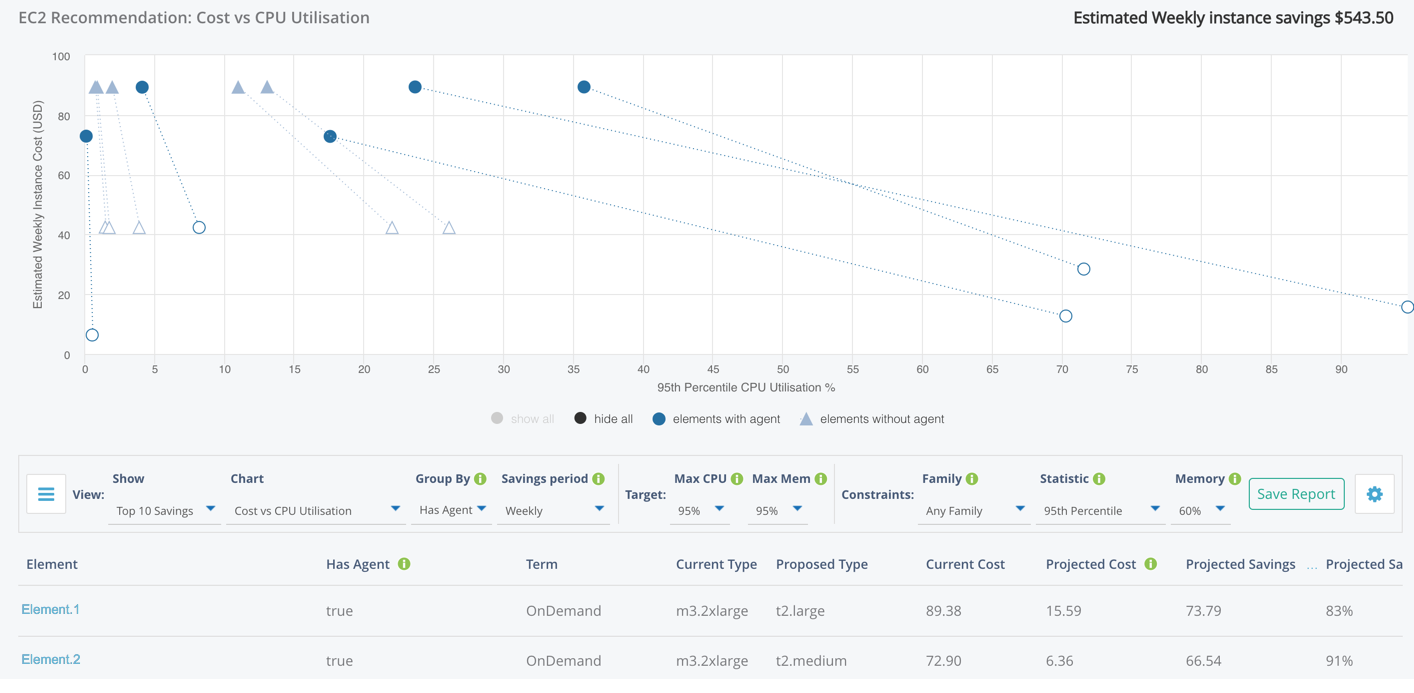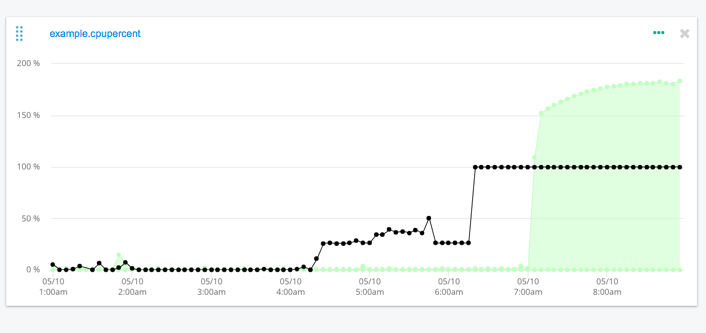The Company
Providing reliable, high-performing digital services for customers is hard enough. Doing so cost-effectively is even more challenging. With the help of Metricly, however, IT asset management provider Oomnitza was able to retain impeccable service availability while drastically slashing its cloud infrastructure costs. Here’s how Metricly enabled Oomnitza to save money without compromising on quality or the user experience. Oomnitza’s web-based software tracks, maintains, and manages IT assets for their customers. The company’s customer-facing software, as well as the backend MySQL databases and RabbitMQ messaging service that drive it, are hosted entirely in the AWS cloud using EC2 instances.
The Challenge
AWS Infrastructure Costs
With a high number of EC2 instances running, Oomnitza struggled to control cloud infrastructure spending without compromising performance. That was because the company’s IT team initially relied on an open source monitoring tool to help manage its EC2 instances. While the tool provided some visibility into Oomnitza’s AWS environment, it did nothing to help DevOps engineers control costs or avoid unnecessary spending on underutilized EC2 instances.
The Solution
A 15% Cost Reduction Through Metricly
Oomnitza’s IT team began looking at other performance management solutions in order to help reduce infrastructure spending. “Our goal was to get an understanding of our total spend on EC2 instances,” explained Jon Burt, Director of Engineering. “We wanted to find machines that were undersized or oversized. We wanted real-time alerts in place, and to be able to scale up and scale down systems as traffic patterns changed” in order to reduce costs without impacting performance. “That was simply not happening” using the open source performance management tool, he said. As a result, Oomnitza adopted Metricly, whose AWS cost-analysis features provided the solution that Burt and his colleagues sought. Since implementing Metricly in the spring of 2018, Oomnitza has reduced its spending on EC2 instances by about 15% of the total bill. What’s more, by following the recommendations provided by Metricly about EC2 instance sizing, Oomnitza has been able to reduce costs without sacrificing the performance of its software. “We’ve maintained the performance that we had before, but we are delivering it at a more cost-efficient rate,” Burt said.

Operational Capacity Planning
Beyond simply helping to save money, the insights into AWS infrastructure spending that Metricly has provided to Oomnitza have also assisted Burt and his team in aligning IT staff planning with infrastructure needs. With the help of Metricly, the company can, for example, determine whether adding more staff in order to enable a migration to a newer type of EC2 instance will ultimately save money.
“I can advocate for additional DevOps staff, and say that if we bring someone else on board to move to newer hardware, it pays for itself through the cost savings.”
Future Plans
Although Burt said that Oomnitza expects to continue using open source tools for non-production monitoring, the company plans to switch entirely to Metricly for managing the performance of its production AWS infrastructure. “The user interface of Metricly is clearly superior,” Burt said in explaining why his team plans to use Metricly exclusively within production environments. “You can get the same level of information from both tools, but Metricly does a much better job of layering it if you want to see different metrics over a period of time.”

He also described Metricly’s technical support as “first-rate,” and said that he’s experienced a “very quick turnaround on any questions I’ve had.” Burt said that he expects to continue to rely centrally on Metricly’s performance-management and cost-analysis features as Oomnitza migrates its infrastructure from virtual machines to containers—a process that it will complete over the coming year. Thus, no matter which specific cloud services power Oomnitza’s IT stack, Metricly will help the company to keep them running in ways that optimize both spending and the user experience.



